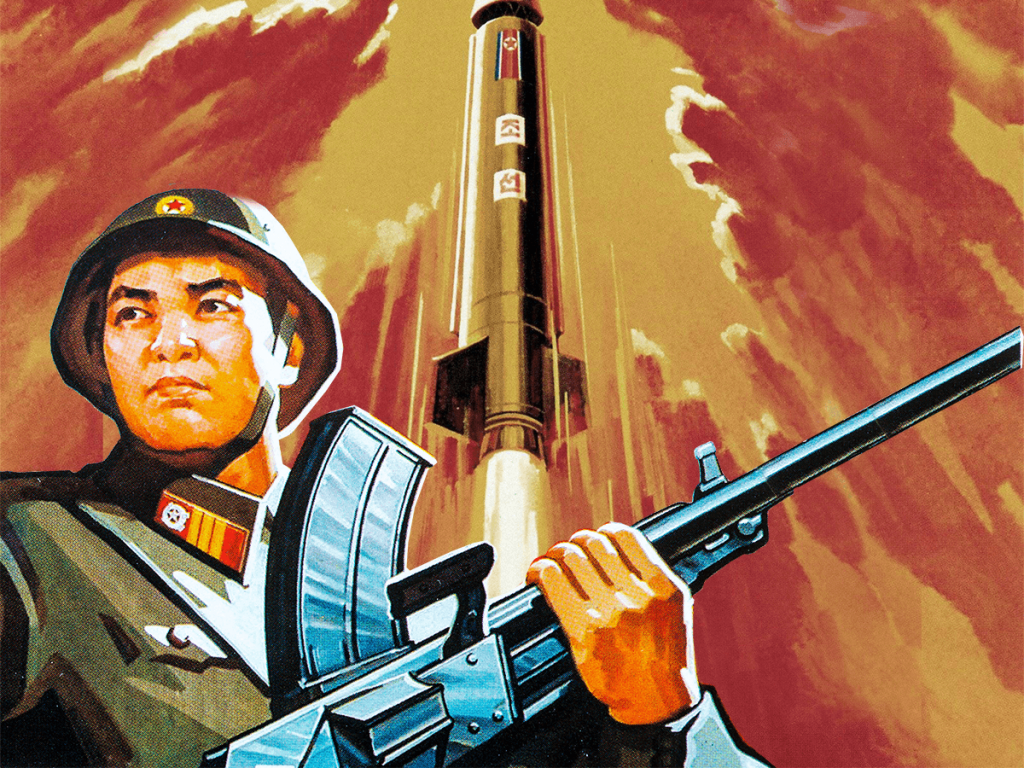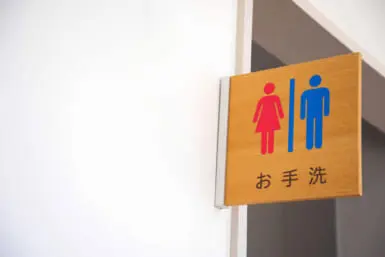As Kim Jong Un continues to launch missiles, and the Japanese government releases a guide on what to do in the case of a nuclear attack, we dissect the motives and outcomes of the rising tensions.
Walking through the arrivals section of Narita Airport earlier this week, I spotted a TV crew with mikes and cameras at the ready, looking for foreigners whose telegenic responses would explain for the thousandth time what people are looking for when they come to Japan. But along with that group of interviewers was a more ominous one: police and security forces conducting random checks on foreigners and Japanese alike. “North Korea fired another missile yesterday,” the Chiba Prefecture police officer said apologetically as he checked my papers and took down my name. “Security is tightening up.”
It’s said – and rightly so – that Japan is one of the safest countries in the world. But not too far beyond its borders, the rising specter of missile attacks from North Korea has the country weighing the feasibility of missile defense systems and its people worrying about just how quickly they might be able to seek shelter if salvos of North Korean missiles were fired at major Japanese cities.
The relationship between Japan and North Korea has been fraught with distrust and resentment since before the Korean War [see below], but North Korea’s current actions have brought relations to what might be an all-time low. In this year alone, the country has test-fired 11 missiles, many of which have splashed down into the seas around Japan. President Kim Jong Un boasts of his country’s nuclear prowess, and promises to rain down destruction on the nations that lie within his missiles’ reach.
Along with the fear and anger comes curiosity: what exactly does the Hermit Nation want? According to Waseda University Professor Sachiko Hirakawa, the saber-rattling can be attributed to a single concern: “State survival. Maintaining this statehood ensures the permanent security of Kim’s family dynasty. People within the North Korean government are afraid that their legitimacy could easily be crushed by external powers – in their thinking, countries such as Iraq, Libya, and Syria were attacked by the US because they did not possess nuclear weapons. So they are convinced that nuclear weapons are fundamental and essential for their survival.”
This gamesmanship has brought North Korea face to face with two global super powers: the US, which is led by a figure who is almost as unpredictable, and less experienced as a national leader than Kim Jong Un; and China, which is ostensibly North Korea’s ally, but has made it clear that its tolerance for the country’s repeated nuclear tests are being sorely tested. Meanwhile, following the impeachment of former president Park Geun-hye, South Korea is being led by Moon Jae-in, a figure who has spoken of taking a more conciliatory approach with its northern neighbor – an approach that runs the risk of seeming weak.
And it is just this concern about seeming weak – in the eyes of one’s populace, and in relation to other nations – that lies at the heart of diplomatic difficulties in the region. It’s a fundamental part of the problem with North Korea, Hirakawa explains: “In order to stem the tide of North Korean aggression and military build-up, the US, Japan, and Korea need to make it clear that their joint security ability is far beyond that of North Korea … At the same time, these countries – and China as well – must provide credible reasons and excuses for North Korea to formally abandon their current policy. Saving face, and protecting the pride of North Korea domestically and externally is extremely important.”
Having a US president who is just as prone to making extreme statements as Kim, and one who has even less national leadership experience, doesn’t help matters. Here, Hirakawa sees that the resuscitation of multiparty talks and the work of international organizations can serve multiple purposes: “Multilateral systems such as the ASEAN Regional Forum, the UN, and six party talks [which North Korea does belong to] should play a role to domesticate North Korea as the long-term goal. Similarly, institutions such as ASEAN Plus Three (APT), the East Asia Summit (EAS), and APEC are useful even without North Korean participation because all of the member nations can find common interests regarding regional stability. These multilateral frameworks should replace US (Trump)-centric power politics.”
“Forceful means are only possible at the tremendous expense of South Korean lives.”
For those who might really want to pursue a military option, why doesn’t a joint US/Japanese/South Korean force just blast Kim out of power? Many an armchair diplomat or general has brought the idea up, but they’re failing to recognize just how dangerous a violent approach might be, as Hirakawa points out: “It is widely believed that US-Japan-South Korean joint operation would easily defeat North Korea and would quickly remove North Korean nuclear facilities. However, before the operation would be finished, North Korean conventional armies could retaliate on Seoul and kill a huge number of people. For example, in 1994, the US simulated that its own military action would lead to the deaths of approximately 500,000 South Korean victims, so they abandoned the military option. Geographically, Seoul is too close. Coercive and forceful means are only possible at the tremendous expense of South Korean lives.” And, it should be added, if North Korea does manage to arm its cruise missiles with nuclear payloads and make even one successful strike, there could also be a tremendous loss of lives in Japan.
These kinds of calculations may need to become more common for Japanese leaders. Fears of North Korean aggression may help drive public opinion in the direction of supporting an amendment of the Japanese Constitution’s Article 9, which currently prohibits the country from maintaining a standing army or waging war. North Korea is a safer bugbear to conjure with too, as Hirakawa points out: “bringing the issue of North Korea to the national constitutional debate is desirable [for Prime Minister Abe] because – unlike the case of China – we have no contacts at any level with North Korea and we won’t do any damage to currently existing relations.”
There are no clear signs that tensions over North Korea will abate. And with Japan rightfully ready to take a more active role in global political – and military – matters, visitors to Japan may now want to prepare both a cheerful comment for the inevitable TV crews and some sober responses for the Chiba Police.
Key Moments in Japanese/North Korean Relations
1949-50: North Korea voices its disapproval of negotiations between South Korean President Syngman Rhee and Japan. (These talks would reach a boiling point over the so-called Syngman Rhee Line, which put the islands known as Takeshima, or Dokdo in Korean, within South Korean territory.)
1955-64: Then Foreign Minister Nam Il makes a call for cultural and financial cooperation between Japan and North Korea. Business ties between the two countries expand.
1960: A program, run in part by the Chongryon, an organization run by ethnic Koreans in Japan who identify with North Korea, repatriates some 600,000 Koreans from Japan to North Korea.
1977-83: Over a period of six years, North Korean operatives kidnap Japanese citizens (17 are officially recognized by Japan and 13 have been acknowledged by North Korea; however, an independent organization in Japan puts the number in the hundreds) in order to steal their identities or to teach Japanese to would-be spies.
1991: Attempts at normalization talks break down over North Korean demands for wartime compensation and Japan’s requests for nuclear inspections.
1998: North Korea fires a ballistic missile over Japan and into the waters off its east coast.
2002-04: Five Japanese kidnap victims are allowed to return to Japan, following a visit to North Korea by Prime Minister Junichiro Koizumi. Two years later, after another visit by Koizumi, five children of two of the returned couples are allowed to come to Japan.
2014: A BBC World Service poll finds that 91 percent of Japanese respondents view North Korea’s influence on the world negatively, the worst estimation recorded by any other country in the world.
2016-17: A series of missile tests by North Korea land projectiles in waters off the coast of Japan – both inside and outside of the country’s exclusive economic zone.









